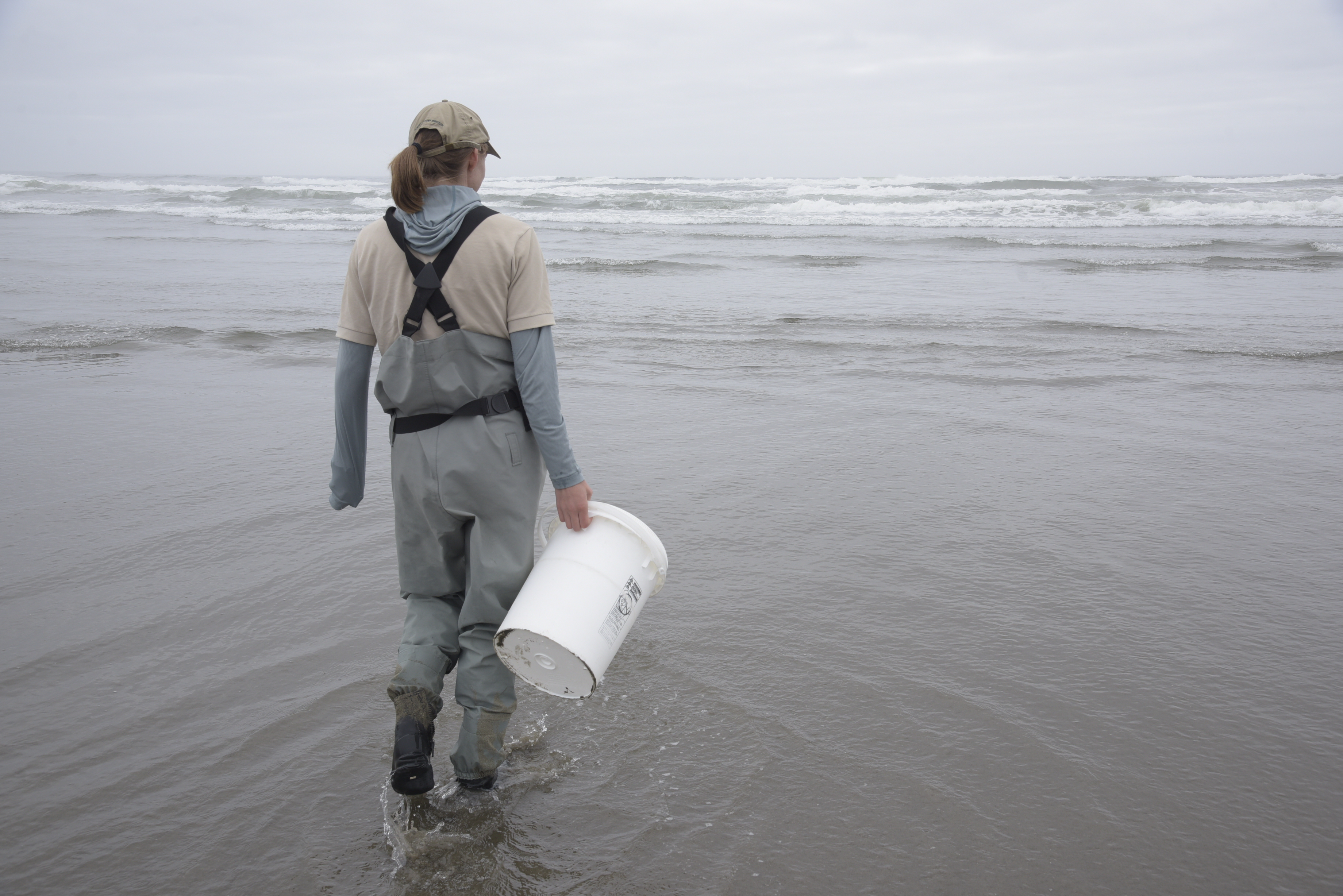Weed eater
Published 5:00 pm Wednesday, September 18, 2002
A herd of goats is cleaning up the bad parts of townThe city of Astoria is turning to a very low-tech method to handle some of its weed-control needs.
Trending
The city Public Works Department has brought in dozens of goats to rid some of its overgrown property of noxious weeds, blackberries and other unwanted growth.
More than 100 of the animals are methodically munching their way through thick tangles of vegetation choking a hillside below the city’s Reservoir 2 near Shively Park. When they’re done there, they’ll perform the same service at Youngs River Falls and a city-owned lot at 30th Street and Grand Avenue.
The four-footed eating machines are here as part of a pilot project to see if they can provide a cost-effective and environmentally sensitive alternative to mechanical cutting and spraying, especially in areas where noxious weeds are spreading.
Trending
The idea came to Public Works Superintendent Ken Cook earlier this year during a multi-agency meeting organized by the Clatsop Soil and Water Conservation District to discuss noxious weed controls.
“I said, ‘What about goats? Everyone has seen individual goats staked out to eat weeds.”
Some goats take a rest, while others continue to feed on an area of vegetation that they have been clearing all morning.A few weeks later, Cook learned from a state weed-control expert about a program in Deschutes County that used large herds of goats to clear unwanted vegetation.
“I said, ‘Let’s give it a try.'”
Caprine Restoration Services is a new project organized by the Deschutes County Soil and Water Conservation District. The program leases out goats to public and private customers for noxious weed and fire-fuel control projects.
The 110 Boer goats arrived in Astoria Friday, and were expected to take two to three weeks to clear the three locations.
A particular target of the Astoria project is Japanese knotweed, a noxious weed that’s spreading rapidly around Clatsop County. The tenacious leafy plant, known by some locally as elephant ears, grows in thick clumps with stalks that can reach a dozen feet high or more and crowds out other vegetation.
Getting rid of that weed and other growth can be difficult, especially on steep terrain where vehicles can’t go without tearing up the soil and crews must resort to weed-eaters, machetes and other labor-intensive methods, Cook said. And herbicide sprays aren’t an option near the city’s drinking supply, or around Youngs River Falls.
Along with eradicating the knotweed, the goats are also removing about 12 years’ growth of blackberries and brush at the reservoir that the city wants to knock back to keep leaves and debris from blowing into the water, Cook said.
At the reservoir, the goats graze away at blackberries and other plants behind a portable wire fence. Cook said Wednesday he’s amazed at the goat’s progress so far, pointing to a tangle of stripped and flattened knotweed stalks that he said stood as much as 15 feet tall just days ago.
“It’s fairly amazing what they can eat and how they knock this down,” he said.
LORI ASSA – The Daily Astorian
The goats scatter on the hillside, stripping plants of their foliage on terrain that vehicles would not be able to manage.The goats offer another advantage over mechanical methods – there are no cuttings to dispose of. The animals trample down but don’t eat the blackberry vines or the knotweed stalks, but the Cook said the city will plant grass on the site to shade out the unwanted weeds and slow their return.
The program costs $250 per day. Half the cost is being covered by a grant secured by the Clatsop Soil and Water Conservation District.
“We’ll evaluate this when it’s done, and see if it makes sense in the long term,” he said.
Watching over the herd is Herbert Holmes, a fifth-generation goat breeder from southwest Texas, and his three border collies. He supplied some of his goats to the program, then was asked to come on board as a herder when another person dropped out. With drought gripping his native state, he’s planning on joining the program permanently and moving to Oregon.
“This came along at an opportune time for me.”
The program now has about 1,000 goats in use, and has sent them to projects all over the state. The animals have eaten knapweed in Eastern Oregon, poison oak in Corvallis, and were used this summer to clear weeds around the edge of the Cache Mountain Fire near Sisters. They’re often used to clear weeds out of subdivisions and private developments, Holmes said.
“Our goal is to be all over the western United States,” he said.
A key to the program is corralling the goats in a contained area. That way they concentrate more on eating instead of roaming, Holmes said, and will clear an area faster.
A goat will eat plants equaling up to 4 percent of its body weight each day. Like cows, goats don’t eat continually, but rest for periods to digest and “chew the cud.”
“Then they start again,” Holmes said.
The goats brought in for the Astoria project are all wethers – castrated males – between 1 and 3 years old. Females generally aren’t used this time of year, since they can’t afford to lose weight prior to the winter when they typically are bearing young or heading to the meat processors, Holmes said.
The Astoria job is the first on the coast for the goat program, and the extra-dense vegetation and steep slopes require a little more time than normal, but Holmes expected the animals to finish up at the reservoir today. He’s recommending that they return next spring for a maintenance munch.
Other agencies are watching the city’s experiment, Cook said. Fort Stevens State Park, for example, is seeking methods to deal with the growing problem of Scotch broom in the 3,800 acre park.









